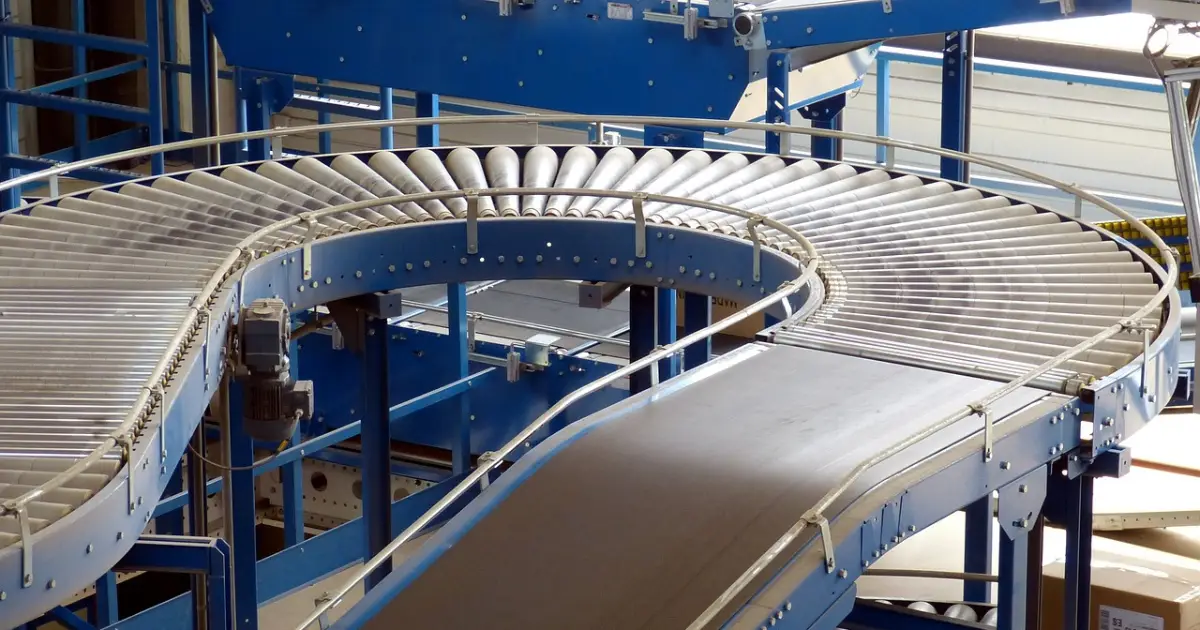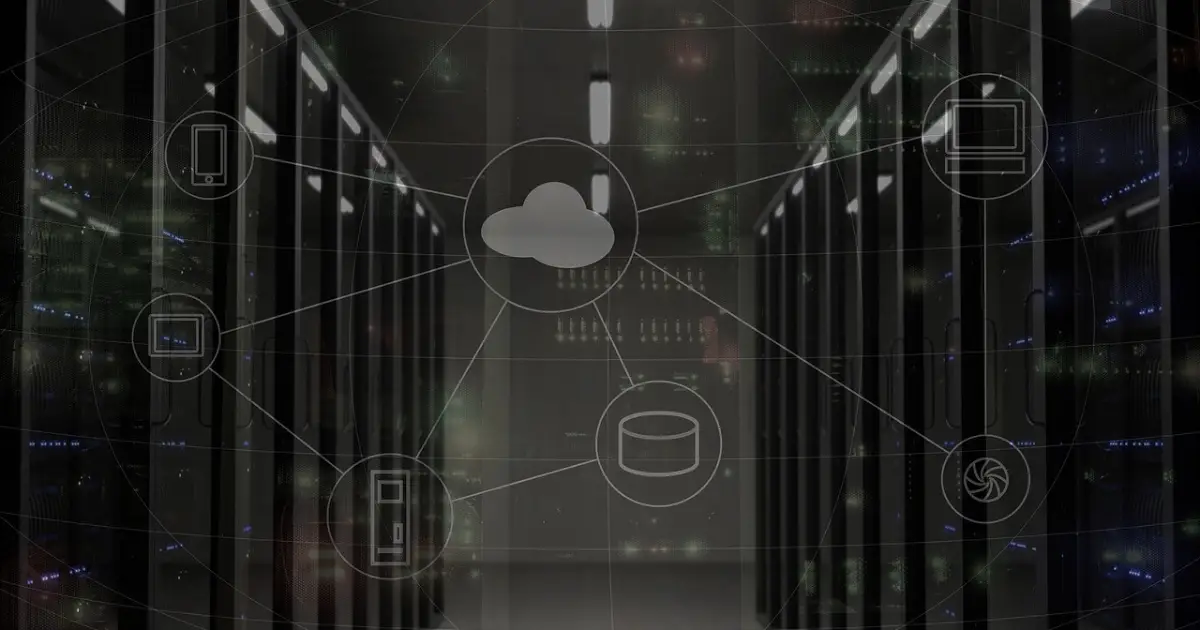focus notes


IoT can also be used in logistics! Explaining industry issues, benefits such as improving delivery efficiency, and implementation examples

table of contents
“Can IoT be useful for logistics?”
"What kind of system does it actually have?"
You may have questions like this. IoT is a system that is also very useful in the logistics industry. By introducing IoT, it is possible to build automated warehouse systems and automate processes such as receiving, storage management, and shipping.There are cases where IoT has actually been able to improve operational efficiency, and IoT may be a solution to the labor shortage problem in the logistics industry.
Therefore, in this article, we will not only explain the challenges of IoT and the logistics industry, but also the benefits of introducing it, technologies that are attracting attention, points to note, and case studies. Please refer to it.
Make logistics work more efficient with IoT! Also explains industry issues
Here we will explain basic information about IoT and the challenges it faces in the logistics industry.
- First of all, what is IoT?
- What are the current challenges in the logistics industry?
First of all, what is IoT?
IoT (Internet of Things) is a technology in which devices collect, transmit, and share data and collaborate with each other through the Internet.Simply put, it is a technology that connects things to the Internet.
Typical examples of general use include devices such as air conditioners being connected to the Internet, allowing information to be obtained in real time, and being able to be controlled remotely using smartphones. You can turn the air conditioner on and off, adjust the temperature settings, change the driving mode, etc. from anywhere, which can be expected to improve convenience.
This IoT technology is also useful in the logistics industry. A variety of sensors and devices could be used to monitor logistics processes and collect data in real time. For example, tracking sensors can record the location, temperature, etc. of a package and send the data to the cloud. This will allow you to accurately understand the transportation status of your cargo, allowing for appropriate management and efficient route planning.
For more information on IoT, please refer to the article below.
IoT is the Internet of Things! Explaining the mechanism, what can be achieved, and implementation examples
What are the current challenges in the logistics industry?
One of the current challenges in the logistics industry is the lack of labor.In fact, the following statement was made in a document from the Ministry of Land, Infrastructure, Transport and Tourism:
Labor shortages in the logistics sector have become evident in recent years. The number of companies feeling that they are short of truck drivers is on the rise. In 2017, 63% of companies responded that they were "shortage" or "slight shortage."
Source: Ministry of Land, Infrastructure, Transport and Tourism | About the current situation surrounding logistics | Page 8 (as of February 7, 2024)
Although this is old data from 2017, 63% of companies responded that they had a ``shortage'' or ``feel there is a slight shortage'' of truck drivers. This means that the labor shortage in the logistics industry is not a local problem, but a common challenge for many companies. I can see how serious it is.
In addition, Japan's working age population* is decreasing significantly as shown below.
*Working age population refers to the population aged 15 to 64.
The labor force population (the population aged 15 and over, including the employed and unemployed) will average 69.02 million people in 2022, a decrease of 50,000 people compared to the previous year (the first decrease in two years). Ta. By gender, the number of men decreased by 220,000 to 38.05 million, while the number of women increased by 160,000 to 30.96 million.
Source: Ministry of Internal Affairs and Communications, Labor Bureau | Trends in Employment Status 1 | Page 1 (as of February 7, 2024)
Since 2019, the population, which is directly linked to productivity, has continued to decline. In addition, the Ministry of Land, Infrastructure, Transport and Tourism's document earlier states that ``By 2050, approximately 40% of the total population is expected to be 65 years of age or older, and the working-age population is expected to decrease by approximately 30 million people compared to 2010.'' I am. Considering this, it is difficult to think that time will solve the driver shortage problem. In fact, it may get worse. We should take some measures voluntarily.
The aforementioned IoT may be the solution to this problem, and we will explain why in the next section.
Improved efficiency of delivery operations! Benefits of introducing IoT
Here we will explain the benefits of introducing IoT.
- Delivery can be made more efficient
- Work progress can be monitored
- You can check stock status in real time
Delivery can be made more efficient
By introducing IoT, delivery operations can be made more efficient.By equipping trucks with IoT sensors and GPS, the location of delivery vehicles can be tracked in real time.
What this means is that by analyzing the large amounts of data collected using IoT technology, it is possible to optimize delivery routes. By analyzing traffic conditions and weather information in real time and calculating the most efficient delivery route, delivery times can be shortened. This could enable one person to make more deliveries, helping to alleviate labor shortages.
In addition, by utilizing technologies such as IoT sensors and AI, we can grasp the loading status of cargo and reduce the empty vehicle rate of delivery trucks (the percentage of distance traveled by trucks without cargo). You can You will be able to maximize the delivery efficiency of each vehicle. Not only that, it is also possible to automate tasks such as driving a vehicle and loading and unloading cargo. This is expected to alleviate the labor shortage.
Work progress can be monitored
One of the benefits of introducing IoT into logistics is the ability to monitor work progress.The data you collect can help you optimize your work efficiency.
For example, IoT devices can accurately record when workers start and finish tasks, making it easier to manage work time. This makes it possible to analyze and improve work efficiency, contributing to increased productivity.
Furthermore, by collecting data such as worker location information and working hours, it can be used to manage worker safety and health. For example, it would be possible to understand how much time workers spend standing and work, and encourage them to take breaks or exercise. By managing your health, you may be able to prevent employees from taking sudden sick leave.
You can check stock status in real time
By introducing IoT, you can check the inventory status in real time.IoT devices such as tags and barcode scanners can be used to automatically track and record the movement of goods within the warehouse.
For example, depending on the system, if you place a product on a shelf or pallet equipped with a barcode reader, the product's location information will be automatically registered in the system. While products are in storage, their condition and location can be tracked in real time. You'll be able to quickly find the products you need.
Once the item is picked according to the shipping instructions, the tag or barcode is scanned again and the system records that the item is ready for shipping. A final scan is also performed and shipping records are updated as the product is loaded onto the truck and shipped.
By monitoring accurately to this extent, the inventory status becomes clear. Of course, since this series of steps is almost automated, we can also expect improvements in operational efficiency. This will help alleviate the labor shortage.
Automated warehouse systems and more! IoT technology attracting attention in the logistics industry
Here we will explain a system that is attracting attention in the logistics industry and can improve operational efficiency.
- automatic warehouse system
- WMS (Warehouse Management System)
- TMS (Transportation Management System)
- RFID
- image recognition
automatic warehouse system
An automated warehouse system is a system that uses IoT technology to automate logistics processes within warehouses and distribution centers.It depends on the system, but in an automated warehouse system, sensors, actuators (a device that converts energy or electrical signals into physical movement. Simply put, it's like a motor), and a control system work together. Masu.
Although it is called a system, an automated warehouse system does not refer to a single piece of software like a WMS (warehouse management system; more details will be explained later), but rather refers to the entire system, including robots and picking systems. The image is that it is a collection of machines, electronic devices, and software.
By introducing such an automated warehouse system, it is possible to automate the work. For example, when products arrive at a warehouse, tags and barcodes on each product are scanned in the receiving area. These tags include product identification information (product name, size, color, expiration date, etc.). The scanned information is automatically recorded in the inventory management system, allowing you to check the stock level of the relevant product in real time. You will be able to accurately grasp the quantity and type of products that have arrived. Once product information is registered in the system, an automated transport system (automated guided vehicle, autonomous mobile robot, etc.) automatically moves the product to the sorting area.
In this way, with an automated warehouse system, you can automate your operations. Depending on the system, it may be possible to automate not only receiving goods but also picking and shipping operations. It will reduce human errors and greatly improve work efficiency.
WMS(Warehouse management system)
WMS (Warehouse Management System) is a system that streamlines and optimizes warehouse inventory management, product receiving and shipping processes, work instruction management, etc.It is possible to reduce warehouse operating costs by reducing manual labor, improving work efficiency, and optimizing space.
For example, registered product information is added to the system as inventory. Depending on the WMS you have installed, the appropriate storage location can be automatically assigned based on the product storage conditions and rotation policy. Since each product is stored in the optimal location according to its characteristics, space usage efficiency will improve.
In addition, the status and location of inventory can be checked at any time through WMS, allowing managers and workers to quickly check the information they need. This will improve the speed and accuracy of decision-making.
TMS(Transportation and delivery management system)
TMS (Transportation Management System) is a transportation management system.It is used to effectively manage and optimize logistics processes, covering transportation planning, execution, monitoring and optimization in a comprehensive manner.
For example, TMS receives information about the cargo to be shipped (weight, volume, destination, etc.) and selects the optimal transportation method (truck, ship, rail, air, etc.) and route. There is no need to open up a map, check cargo information, and plan your route from scratch as you would in the past. The system will take into consideration factors such as delivery time and product characteristics.
Then select the carrier that best fits your specific shipping requirements from the list of contracted carriers. Depending on the settings, selection criteria may include contract details, fees, reliability, and transportation time. It will be easier to make objective decisions and choose a contractor that is both cost-effective and reliable.
Once you have selected a vendor, depending on the system, the TMS will automatically make shipping arrangements and generate the necessary transport documents (freight transport contract, loading list, invoice, etc.). This will save you a lot of time and effort compared to creating transport documents manually. As a result, products can be quickly prepared for shipment, reducing time to shipment.
RFID
RFID (Radio-Frequency Identification) is a technology that stores information in electronic tags and uses a dedicated reader or reader/writer to read and write data without contact.Basically, it consists of two parts: an RFID tag (a tag that stores electronic data) and an RFID reader (a device that reads the tag). RFID is used for tracking, management, and identification in logistics.
For example, when an RFID tag is attached to a product or pallet, an RFID reader automatically reads information from the tag and updates the inventory database in real time. This automates the recording of product arrival, storage, and shipping status, greatly improving work efficiency.
Best of all, track the movement of goods in real time. Managers always know the exact location and quantity of inventory, allowing for faster decision-making and effective space utilization. This will help prevent loss and theft.
image recognition
Image recognition is a technology that allows computers to analyze digital images and understand their content and characteristics.Objects and patterns can be detected in real time using cameras and sensors and processed as data. Image recognition technology is used in a variety of applications in the logistics industry.
For example, conventional warehouse inspections were performed manually by reading barcodes using handheld terminals. However, by using image recognition technology, images of product labels and slips can be automatically read and inspection work can be automated. This makes it possible to shorten work time, reduce labor costs, and reduce the rate of incorrectly inspected products.
In addition, by using image recognition, it is also possible to recognize the shape, color, bar code, etc. of luggage and automatically sort it. The captured image data is analyzed in real time and AI and machine learning algorithms are used to accurately identify the characteristics of the baggage. Automatic sorting equipment and robotic arms accurately sort packages to designated areas and delivery lines according to the information they receive. Compared to manual sorting, the process will be faster and more accurate.
Things to check in the logistics industry! Things to be aware of when introducing IoT
Here we will explain the points that the logistics industry should pay attention to when introducing IoT.
- Check the current communication environment
- There is a high probability that the current business flow will change.
Check the current communication environment
One thing that the logistics industry should pay attention to when introducing IoT is to check the current communication environment.If the communication environment is poor, IoT may not function properly.
As mentioned above, IoT is a technology that uses sensors and networks to collect, analyze, and utilize data in real time. Therefore, without a stable communication environment, there may be delays in sending and receiving data. Especially in the logistics industry, warehouses are likely to be large and there are a huge number of products, so it is expected that a huge amount of data will be handled. Insufficient communication speed and bandwidth will cause serious problems in collecting, transmitting, and processing data.
If the communication environment is poor, introduce edge computing. Edge computing refers to technologies and approaches that process information at the site where data is collected and generated, rather than in the cloud or data center. By processing data at the site where the data is generated, rather than in the cloud, you can reduce communication volume and shorten response times. This will enable efficient data processing even in poor communication environments. It may be possible to improve the communication environment to some extent.
There is a high probability that the current business flow will change.
Introducing IoT may require changes to your current business flow.This is because many tasks will be streamlined and automated.
For example, traditional inventory management centered on manual inventory and data entry. However, when implementing IoT sensors and RFID tags, real-time inventory tracking and automatic updates become possible. This means that you no longer need to enter it manually. At this point, it is clear that a change is occurring in the business flow.
Above all, business flows need to be optimized to take full advantage of features such as real-time data collection, analysis, and monitoring. This is because simply introducing it may not fit the site well. It is necessary to flexibly change the business flow and business content according to the IoT devices being introduced.
Please note that changes to the work flow may result in opposition from the field. This is because the skills needed are likely to change as well. There may be opposition from those in the field, as the knowledge and skills that have been cultivated up until now may become irrelevant.
Therefore, when introducing IoT, it is important to have the workplace fully understand the current issues and the necessity and importance of IoT devices. It would be a good idea to obtain their consent for the installation and install IoT devices that reflect their opinions. By incorporating opinions from the field, they may be able to convince you of the introduction of IoT.
Explaining IoT introduction cases in the logistics industry
Here, we will explain examples of IoT implementation in the logistics industry.
- Introduction example in the logistics industry part 1
- Introduction example to the logistics industry part 2
Introduction example in the logistics industry part 1
Among our company's cases (strictly speaking, logistics within a factory and demonstration experiments) are the following.
Identifying inventory location in logistics
Using a BLE receiver with enhanced directional functionality, we can identify the location of logistics inventory with a BLE (*2) beacon (FCS1301, timbe) transmitter in the factory and collect data.
(*2) BLE (Bluetooth Low Energy) is a Bluetooth standard that enables short-range wireless communication with low power consumption.
Building a network within the factory
LPWA technology solves the problem of collecting beacon transmission data in environments where LAN construction is difficult, such as in factories. The LPWA communication module (LoRaPAN) developed by Nagoya Institute of Technology Otsuka Laboratory is a private network that does not require a communication carrier, so by using a receiver capable of LPWA communication, you can easily construct a wide-area network.
Source: Focus Systems Corporation| Started demonstration experiment to improve the efficiency of factory logistics using a wide area positioning system using BLE beacon and LPWA technology (as of February 7, 2023)
In this case, the aging of the workforce, labor shortages, and improving quality control were identified as major issues. To address these issues, the company focused on introducing IoT and digital technologies.
The location information beacons used, "FCS1301" and "timbe," have wide-range communication capabilities and provide the ability to grasp the exact location of logistics inventory within the factory and collect data. It is expected to reduce the risk of data loss and improve the accuracy of the location information system.
Introduction example to the logistics industry part 2
There are other examples of applications in logistics.
Logistics example) Real-time tracking
Source: Japan Patent Office | Regarding enhancement of case studies related to IoT-related technologies, etc. | Page 5 (as of February 28, 2024)
Track the exact location of packages and vehicles in real-time so you can tell your customers exactly where they are. This transparency may lead to increased customer satisfaction. In addition, you can expect to improve transportation efficiency by optimizing transportation routes, alerting you to traffic congestion, and quickly selecting alternative routes.
summary
So far, I have explained IoT and logistics. By utilizing IoT, you can improve your business efficiency. You can expect to speed up delivery operations and reduce costs. In particular, cutting-edge technologies such as automated warehouse systems can be the key to solving challenges in the logistics industry by automating inventory management and shipping processes.
However, when introducing it, it is necessary to pay attention to the communication environment and the opinions of the people in the field. When introducing IoT technology, it is important to check these in advance and implement them carefully and systematically. If you are considering introducing IoT, please contact us.
Achievements left behind
48 years since its establishment.
We have a proven track record because we have focused on what is important.
It has a long track record in both the public and private sectors.
Number of projects per year
500 PJ
Annual number of business partners/customers
200 companies
Maximum number of trading years
47 years
Total number of qualified persons
1,870 people






